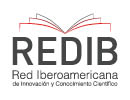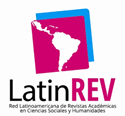#Instagrammable. Practices and routines of a group of fans of the social media influencers Katy Esquivel and Tana Rendón and the construction of cultural capital and female narratives
DOI:
https://doi.org/10.21142/DES-1401-2022-0019Keywords:
social media influencer, digital ethnography, media rituals, cultural capital, female narrativesAbstract
This research aims to understand the practices and routines of a group of Peruvian fans of social media influencers Katy Esquivel and Tana Rendón on Instagram and how this group builds cultural capital and female narratives from media content. To answer this question, digital ethnography was used as the main fieldwork methodology to find fans and analyze their posts and social interactions on the social network Instagram. Likewise, this research conducted remote and only face-to-face interviews before social isolation due to COVID-19. Among the findings, the practices and routines created around the media content of celebrities stand out, in addition to the advice and lessons learned by fans to become entrepreneurs of themselves and serve as cultural references that give meaning to their lives. The narratives of social media influencers become a second school for their fans, allowing them to build cultural capital, reconstruct their subjectivities and consolidate their own identity as part of a global and cosmopolitan middle class.
Downloads
References
Appadurai, A. (2001). Modernity at large. Cultural dimensions of globalización. University of Minnesota Press.
Ardevol, E. y Lanzeni, D. (2014). Visualidades y materialidades de lo digital: caminos desde la antropología. Anthropologica, 32(33), 11-38.
Bell, C. (1992). Ritual theory, ritual practice. Oxford Press.
Boellstorff, T. (2008). Coming of age in second life. An anthropologist explores the virtually human. Princeton University Press.
Bourdieu, P. (2007). El sentido práctico. Siglo XXI.
Bourdieu, P. (1979). La distinción. Criterio y bases sociales del gusto. Taurus.
Bourdieu, P. (2003). Un arte medio: ensayo sobre los usos sociales de la fotografía. Gustavo Gilli.
Cánepa, G. y Lossio, F. (Eds.). (2019). La nación celebrada: marca país y ciudadanías en disputa. Universidad del Pacífico y Pontificia Universidad Católica del Perú.
Castro, R. (2017). «En ¡Asu mare! Todos somos protagonistas»: Rituales de clase y distinción en el nuevo cine de entretenimiento peruano. (Cuaderno de trabajo n.° 39). Departamento de Ciencias Sociales de la Pontificia Universidad Católica del Perú.
Celis Giraldo, J. E. y Guatame Castro, P. C. (s. f.). La institución educativa y la teoría de la estructuración de Anthony Giddens. Revista Iberoamericana de Educación, 22.
Comaroff, J. [Jean] y Comaroff, J. [John]. (2012). Ethnicity S.A. Katz Editores.
Couldry, N. (2003). Media rituals. A critical approach. Routledge.
Dayan, D. y Katz, E. (1994). Media event. The live broadcasting of history. Harvard University Press.
De Certeau, M. (1996). La invención de lo cotidiano. 1. Artes de hacer. Universidad Iberoamericana, Instituto Tecnológico y de Estudios Superiores de Occidente, Centro de Estudios Mexicanos y Centroamericanos.
Entwistle, J. (2002). El cuerpo y la moda. Una visión sociológica. Paidós.
Foster, R. (2008). Commodities, brands, love and kula: Comparative notes on value creation. Anthropological Theory, 8(1), 9-25.
Frier, S. (2020). Sin filtros. La historia detrás de Instagram. Conecta.
Fuller, N. (2001). Maternidad e identidad femenina: relato de sus desencuentros. En S. Donas Burak (comp.), Adolescencia y juventud en América Latina. Libro Universitario Regional.
Giddens, A. (2006). La constitución de la sociedad. Bases para la teoría de la estructuración. Amorrortu.
Godart, F. (2012). Sociología de la moda. Edhasa.
Goffman, E. (1971). La presentación de la persona en la vida cotidiana. Amorrortu.
Gupta, A. y James, F. (Eds.). (1997). Discipline and practice: «The field» as site, method and location in anthropology. En Anthropological locations. Boundaries and grounds of a field science [Introducción]. University of California Press.
Hall, S. (2010). Etnicidad: identidad y diferencia. En S. Hall, Sin garantías. Trayectorias y problemáticas en estudios culturales. Envión Editores, Instituto de Estudios Peruanos, Instituto Pensar, Universidad Andina Simón Bolívar.
Haynes, N. (2016). Social media in northern Chile. University College London Press. https://doi.org/10.2307/j.ctt1g69xv2
Horst, H. y Miller, D. (2012). Digital Anthropology. Berg.
Huber, L. y Lamas, L. (2016). Deconstruyendo el rombo: consideraciones sobre la nueva clase media en el Perú. Instituto de Estudios Peruanos.
Instituto de Estadística e Informática, INEI. (2018). Tecnologías de la información y la comunicación. https://www.inei.gob.pe/estadisticas/indice-tematico/tecnologias-de-la-informacion-y-telecomunicaciones/
Jaramillo, F. y Zambrano, O. (2013). La clase media en Perú: cuantificación y evolución reciente. Banco Interamericano de Desarrollo.
Jenkins, H. (2006). Convergence culture. New York University Press.
Jenkins, H. (2010). Piratas de textos. Fans, cultura participativa y televisión. Paidós.
Jenkins, H., Ford, S. y Green, J. (2015). Cultura transmedia. Gedisa.
Kopytoff, I. (1986). The cultural biography of things: Commoditization as process. En A. Appadurai (ed.), The social life of things. Cambridge University Press.
Korstanje, M. (2008). La fotografía en Pierre Bourdieu y el problema de la integración social. Revista Austral de Ciencias Sociales, (14), 179-190. Universidad Austral de Chile.
Lin, N. (2004). Social capital. Cambridge University Press.
Lipovetsky, G. y Roux, E. (2012). El lujo eterno. De la era de lo sagrado al tiempo de las marcas. Anagrama.
Malinowski, B. (1973). Los argonautas del Pacífico occidental [Introducción]. Península.
McNay, L. (1999). Gender, habitus and the field: Pierre Bourdieu and the limits of reflexivity. Theory, Culture and Society, 16(1), 95-117.
Miller, D., Rabho, L., Awondo, P., De Vries, M., Duque, M., Garvey, P., Haapio-Kirk, L., Hawkins, H., Otaegui, A., Walton, S. y Wang, X. (2021). El smartphone global. Más allá de una tecnología para jóvenes. UCL Press.
Miller, D., Costa, E., Haynes, N., McDonald, T., Nicolescu, R., Sinanan, J., Spyer, J., Venkatraman, S. y Wang, X. (2016). How the world changed social media. UCL Press.
Moore, S. F. y Myerhoff, B. G. (1977). Secular ritual. Van Gorcum.
Newman, A. (2018). Instagram marketing for small business. Proven strategies used by influencers for you to grow tour Instagram following up to 1 million followers. S. e.
Pauly, J. J. (2014). Ritual theory and the media. En The handbook of media and mass communication theory. John Wiley & Sons.
Peterson, M. A. (2005). Anthropology and mass communication. Media and myth in the new millennium. Berghahn.
Pink, S., Horst, H., Postill, J., Hjorth, L., Lewis, T. y Tacchi, J. (2019). Etnografía digital. Principios y práctica. Morata.
Ponce, T. (2007). Los libros de «autoayuda» y la construcción de una narrativa del sujeto contemporáneo. En S. López Maguiña, Portocarrero, G., Silva Santisteban, R., Ubilluz, J. C., Vich, V. (eds.), Industrias culturales. Máquina de deseos en el mundo contemporáneo (pp. 35-49). Red para el Desarrollo de las Ciencias Sociales en el Perú.
Postill, J. (2018). Doing remote ethnography. En Hjorth, L., Horst, H., Galloway, A. y Bell, G. (eds.), Routledge companion to digital ethnography. Routledge
Sibilia, P. (2008). La intimidad como espectáculo. Fondo de Cultura Económica.
Seaver, N. (2017). Algorithms as culture: Some tactics for the ethnography of algorithmic systems. Big Data & Society, 1-12. https://journals.sagepub.com/doi/pdf/10.1177/2053951717738104
Trinidad, R. (2017). Marketing personal para un reconocimiento camuflado. En M. E. Ulfe y R. Trinidad (eds.), En busca de reconocimiento: reflexiones desde el Perú diverso (pp. 279-296). Fondo Editorial de la Pontificia Universidad Católica del Perú.
Uccelli, F. y García Llorens, M. (2016). Solo zapatillas de marca: jóvenes limeños y los límites de la inclusión desde el mercado. Instituto de Estudios Peruanos.
Van Dijck, J. (2016). La cultura de la conectividad. Una historia crítica de las redes sociales. Siglo XX.
Van Driel, L. y Dumitrica, D. (2020). Selling brands while staying «authentic»: The profesionalización of Instagram influencers. Convergence: The International Journal into New Media Technologies (pp. 1-19). Sage Publications.
Vite, O. (Enero-junio de 2018). El cuerpo como capital social en Instagram: el caso de @adri_vainilla. Contratexto, 29, 201-225.
Yuheng, H., Manikonda, L. y Kambhampati, S. (2014). What we Instagram: A first analysis of Instagram photo content and user types. Association for Advancement of Artificial Intelligence.
Downloads
Published
Issue
Section
License

Esta obra está bajo una licencia http://creativecommons.org/licenses/by-nc-sa/4.0/



















